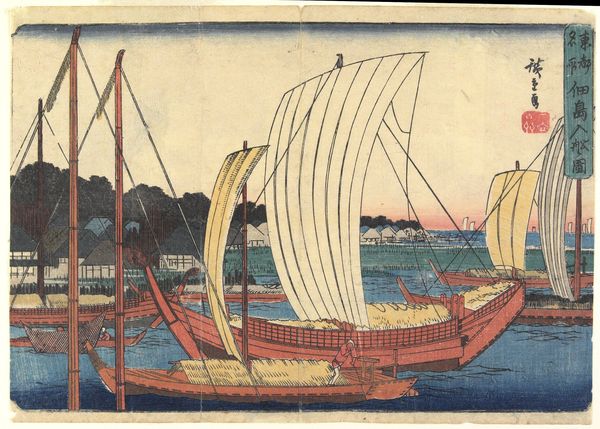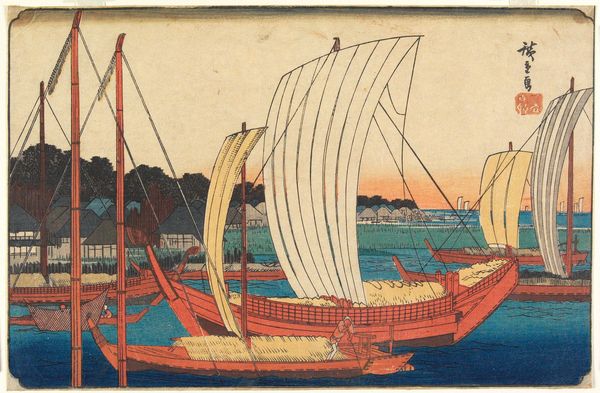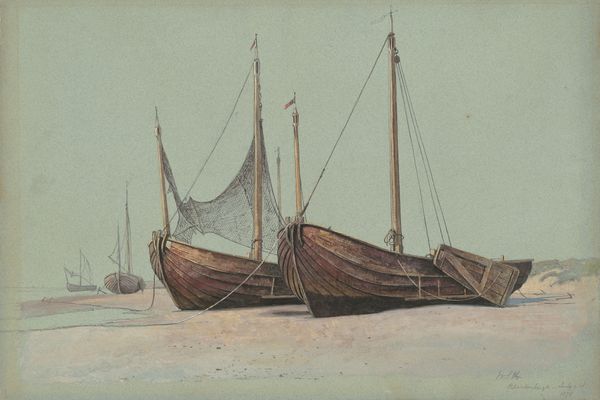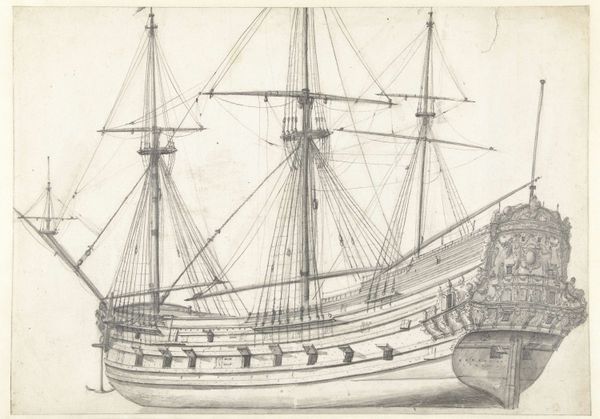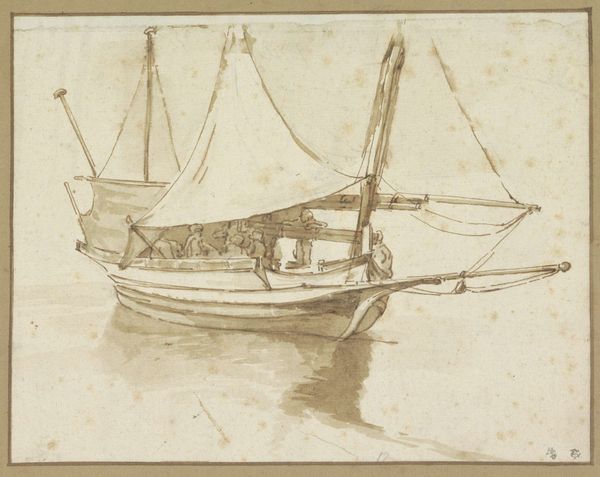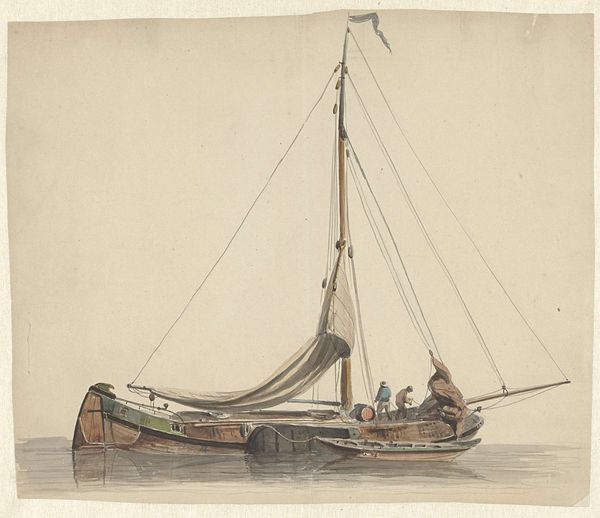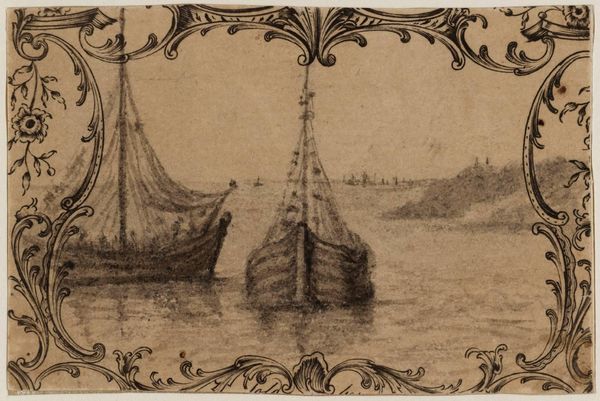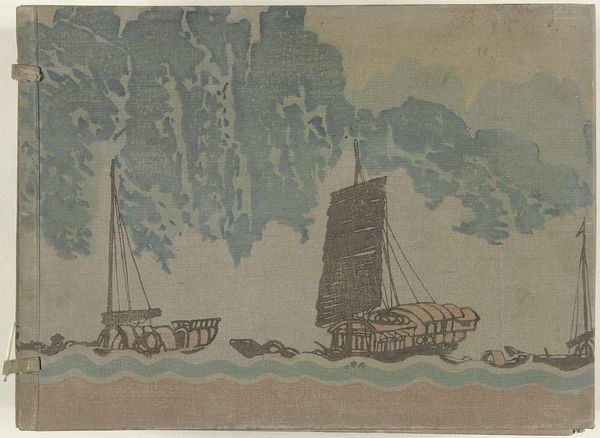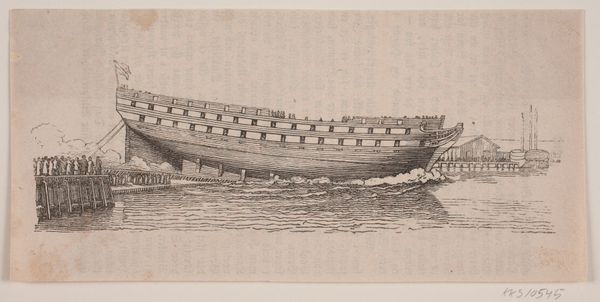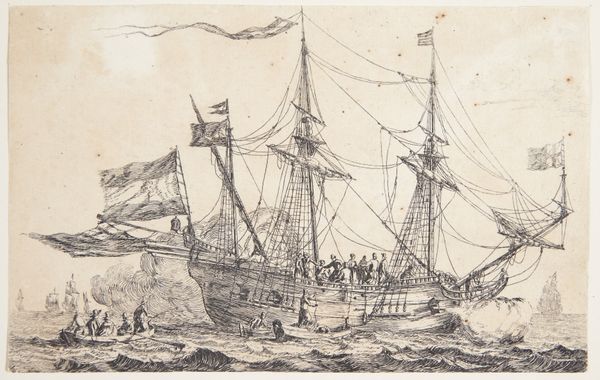
coloured-pencil, print, ink
#
coloured-pencil
# print
#
asian-art
#
landscape
#
ukiyo-e
#
japan
#
ink
#
coloured pencil
Dimensions: 3 1/8 × 4 5/8 in. (7.9 × 11.8 cm) (image, sheet, yatsugiriban)
Copyright: Public Domain
Curator: This lovely woodblock print, entitled "The Sea Route off Kazusa Province," was created by Hokumyō sometime between 1834 and 1837. It's currently held here at the Minneapolis Institute of Art. What are your first impressions? Editor: There's an undeniable serenity here. The delicate rendering of the waves, the muted tones, and the subtle variations in color – it evokes a quiet stillness despite depicting a potentially turbulent subject matter like the sea. Curator: Absolutely. It's essential to situate Hokumyō's work within the broader context of ukiyo-e art during the Edo period. Consider the socio-political climate: a rigid class system, burgeoning urban centers, and the rise of a merchant class seeking pleasure and escapism. Hokumyō, and artists like him, were not just depicting landscapes; they were offering a visual narrative that resonated with contemporary audiences longing for connection to nature and a simpler life, one idealized and certainly removed from the toils of labor on similar vessels. Editor: Speaking of labor, notice the meticulous construction of the ship, every plank carefully delineated. It strikes me how much emphasis is placed on the vessel itself as an object of production and transport, and thus highlighting how intertwined nature and human craft become. Curator: Precisely! Ukiyo-e prints, like this one, were mass-produced, reaching a wide audience, democratizing art and spreading idealized images and narratives throughout Japanese society. The prints would have been considered very low brow compared to the scrolls commissioned by wealthy individuals or temples, yet it tells us so much about the aspirations and cultural trends of the time. It allowed artists to capture fleeting moments, transforming them into enduring representations of beauty, resilience, and human interaction with the natural world. Editor: Looking at the sails, I’m reminded of the laborious processes required to both navigate these vessels, and manufacture the materials required for passage, not to mention the environmental materials used for dying sails and painting the ship itself. Curator: I agree, reflecting on how artworks like Hokumyō's embody not just artistic expression but also complex intersections of material culture, social dynamics, and individual identities truly enhances our understanding and appreciation. Editor: It makes you consider how all this comes together. To examine closely both the processes of the laborers that crossed that route but also the process required of Hokumyō and his contributors. It creates another bridge across labor. Curator: It does indeed, what a rich layered commentary! Editor: Exactly.
Comments
No comments
Be the first to comment and join the conversation on the ultimate creative platform.
